Omnichannel retailing: What is it really?
If you’ve been in retail for any time at all, you’ll have heard the term omnichannel being thrown around alongside multichannel as a strategy. Whether your retail business is completely online, completely offline or a mixture of the two, you’ll almost certainly be looking for ways you can improve your offering for your customers as a means to improving your profits.
Creating an omnichannel strategy can be one way to improve your customer service across all your sales channels and to increase your profits, but what is omnichannel anyway? And why is it important for your customers? Let’s take a deep dive into what omnichannel retail means as a strategy, how you can implement it in your business and what you’ll need to do to reach omnichannel status.
What is omnichannel retail?
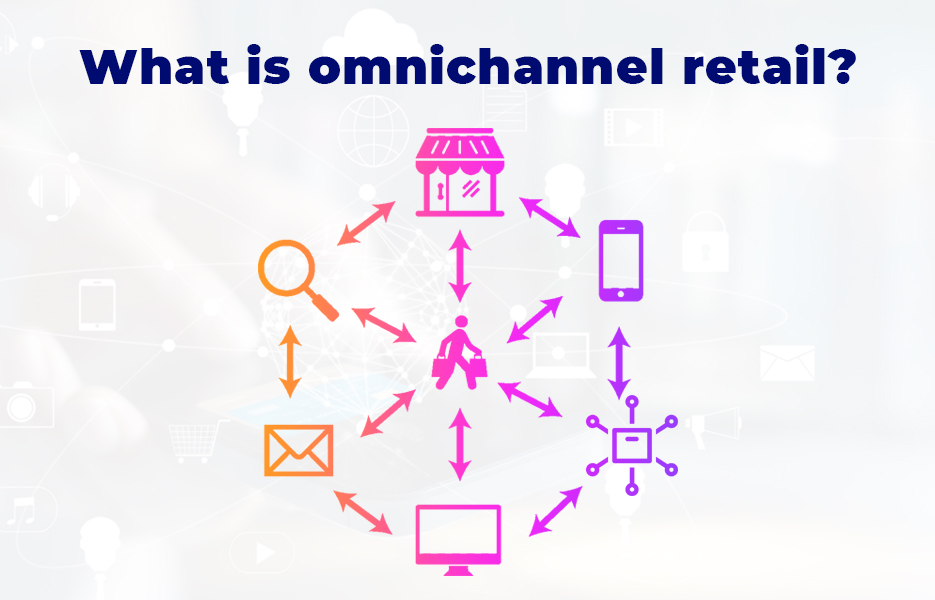
Studies have shown that while traditional, in-store retail is on the decline, customers want to interact with businesses across a number of different sales channels. It is rare to find a shopper that only shops in-store, or carries out every single one of their purchases online. Most customers prefer to engage with businesses across different channels – from eCommerce websites and social media channels, to in person, in store interactions.
Hubspot’s definition states: Omnichannel experience is a multi-channel approach to marketing, selling, and serving customers in a way that creates an integrated and cohesive customer experience no matter how or where a customer reaches out.
Omnichannel retailing is a pretty recent phenomenon that allows retailers to create a unified shopping experience for customers. It first emerged as a strategy around 2003 when US retailer Best Buy used a customer-centric approach in order to compete with Walmart’s electronics department. Best Buy’s approach to customer support in-store and online sales, as well as providing post-sales support was widely regarded as a type of ‘assembled commerce’, which coined the term omnichannel. This approach was adopted by healthcare and financial service industries and eventually, smaller retailers began to work towards implementing it too – because essentially, it is about making your business available to customers wherever and whenever they want to shop, or to engage with you.
Whichever sales or marketing channel they engage with you – either on one, or several – they will receive the same high levels of service, and satisfaction from their interaction with you, which means they are more likely to become a long-term customer. They are also more likely to recommend you to their friends and family, increasing brand awareness and the reputation of the company.
So, it might look like this:
- Customer searches for the product they want on Google Shopping, then find the best price on your website
- They visit you in-store to make their decision while they are in town
- Once the decision is made, they create an account and purchase the product through your mobile app, for click and collect at a local collection point
- When they encounter a problem with their order (e.g. they realised they actually wanted an alternative colour) they contact you via social media for instructions on how to return the product
- They request a return on your website and drop off at a third-party courier collection point, whereupon their purchase is refunded to their original payment method
- The next day they call their local store to check stock for the alternative colour and ask one to be reserved for their purchase and collection later that day, where they pay cash
In this example, there are seven different touch-points with your business, with multiple interactions on each, but other customer journeys might look quite different. The important thing in each interaction, is that customers should be equally satisfied that they have received the high levels of service they would expect from you, and they can complete each step of their purchase in the way that suits them best at the time.
Isn’t omnichannel the same as multichannel?
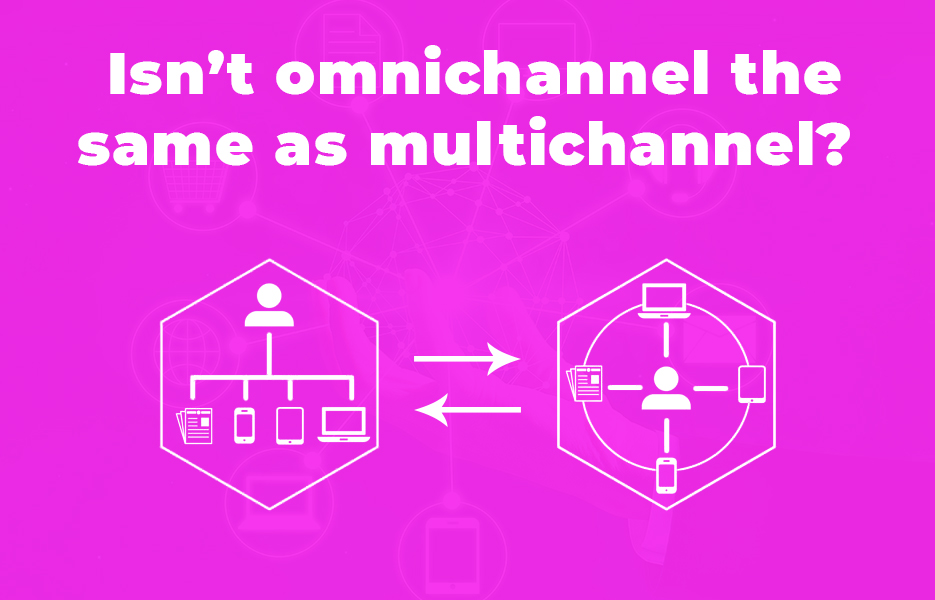
It does sound similar, since there are multiple sales channels involved, and sometimes we’ve seen omnichannel and multichannel being applied interchangeably, but it isn’t the same.
Where retailers have a multichannel strategy, they are likely to sell through as many channels as possible, but they are likely to keep their management separate (although they might be managing orders through one order management system) but the aim is to add as many channels as possible, for the benefit of the business. There is no attempt to unify the customer experience across the different sales channels. A multichannel approach will consider the consumers, but more channels are added with the aim to create more profit, rather than increasing customer satisfaction and allowing customers to interact with the business wherever, whenever and however they prefer.
With an omnichannel approach, the customer is the key to the success of the business. Omnichannel businesses will use centralised data management and a centralised customer service team in order to increase the standard of responses across different touchpoints.
Businesses implementing omnichannel approaches are (of course!) still aiming to increase their profits! But the omnichannel approach focuses on offering an exceptional customer experience, which will lead the business to a profit through the cultivation of enduring relationships with customers, rather than selling to multiple customers once in multiple places. The omnichannel approach is likely to involve fewer channels, but it doesn’t mean less chance of traffic to your listings, or fewer sales being made. It is about having a presence in the right places for your customers, and providing the same level of service on each channel, so they are happy wherever they interact with you.
We can use the analogy of quantity vs quality, to illustrate the difference between multichannel and omnichannel. Loosely speaking, we can equate multichannel with quantity of sales channels, and omnichannel with all round quality of service. This example is a little bit simplistic, since there are a great many multichannel businesses providing excellent quality of service across all of their sales channels. But an omnichannel approach is a lot more deliberate and intentional in the way the service is provided.
Why should retailers implement an omnichannel approach?
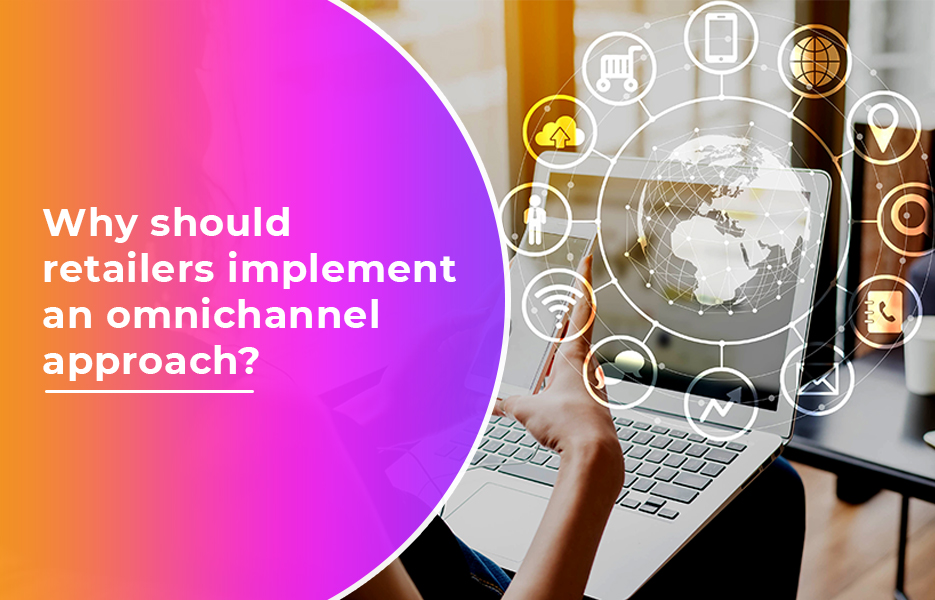
Whether you’re considering adopting an omnichannel approach as you launch your business, or you’re looking to revitalise and reinvigorate an existing business, an omnichannel approach might be just the strategy you need. The numbers support the claim that omnichannel works too:
Businesses that have an omnichannel strategy retain more than 89% of their customers
A strong omnichannel customer engagement strategy will help businesses see a 9.5% rise in their annual revenue
87% of customers think brands should put more effort into providing a seamless experience
Omnichannel shoppers have a 30% higher lifetime value than those who shop on just one sales channel
21% of customers would buy online from a different retailer if a product is out of stock in store
71% of shoppers agree it is important to be able to view information online for inventory in store
The figures help to illustrate that omnichannel works, but there are other benefits that businesses see when they go omnichannel – let’s take a look.
Increased trust and satisfaction
When the right combination of channels are implemented for target customers, they will be able to choose how they want to interact with the business. Having a physical store as well as a presence in multiple places online will help to give customers confidence in your business – especially for risk-averse groups who might browse for purchases and prices online, but prefer to make their final purchase in store.
Receiving high quality service wherever they choose to interact with your brand will help to increase the satisfaction of your customers, which will in turn help to boost their loyalty to your brand. Since retaining existing customers is much more cost-effective than trying to attract new customers, there are clear benefits to omnichannel in the longer term.
Time saving
There are several ways in which an omnichannel experience can help save time for customers:
- Being able to search for items online before visiting the store means that customers don’t have to spend time in-store browsing before they make a decision
- Being able to order online and collect in-store ensures that customers don’t have to worry about being at home to receive their order, or having to visit a collection office if they are out when a delivery is attempted
- Being able to order online, try on at home and return or exchange in store means that customers don’t have to wait for the return to be processed – they can get their exchange, or their refund processed instantly
- Being able to send their returns through a range of different methods mean they are able to send from wherever is convenient, as well as reducing unnecessary journeys
While omnichannel saves time for customers, when set up well it saves time for businesses too. With the right levels of automation (inventory management, as well as a combined social media and email inbox, for example) businesses can manage their inventory levels effortlessly and coordinate their customer service efforts so that enquiries can be dealt with more efficiently.
Environmental factors
Since customers can access your omnichannel business in different ways, there may be benefits to the environment. Think about:
- Being able to visit a store on foot or by public transport may mean that there are fewer car journeys required
- Packaging materials can be reduced, and this will have a positive impact on reducing the use of plastic
- Deliveries to click and collect or in-store locations can minimise vehicles on the road
- Journeys to send online returns back to the retailer can be reduced
- Customers are likely to order more than one item in their orders, streamlining delivery times and minimising packing materials
Although there are potential benefits to the environment, when customers interact with a retailer in several different ways, it isn’t as straightforward to determine the extent of these benefits. This means omnichannel as a concept isn’t necessarily environmentally friendly, but it can help businesses to implement positive steps that can impact the environment in the right way.
Increased conversions and profits
By being able to visit a store to see an item – or in the case of fashion retail, to try a garment on – before making a purchase decision means that customers are more likely to buy (especially for more expensive purchases). While customers are in store, they are more likely to make additional purchases while they are there, that they perhaps wouldn’t have if they ordered online. It is easier to see more in-store, and impulse purchases (for example, with special offers) that might not otherwise have been considered are more likely to take place.
Keeps the organisation adaptable
If you’re just starting your business and you’re aiming to have an omnichannel strategy from the get-go, fantastic! However, many retail and eCommerce businesses don’t start out with such a big picture in mind. They start with the aim to make enough money for the founders to live on, often growing from a side hustle until they can expand enough to employ team members, and use a multichannel approach as their business grows.
When implementing an omnichannel strategy, the staff will need to be flexible enough to adapt to other tasks. Sales advisors in store may need to work on answering enquiries via phone or through the company’s enquiry management system on an iPad when the store is quiet, for example, or dispatching orders from the store to customer delivery addresses.
Encourages collaborative working
If you’ve got a big staff with teams that tend to work in isolation from each other, proceeding with an omnichannel approach will mean they have to get closer. Many retailers with multiple outlets already work collaboratively – sharing inventory information, and sending products between branches, for example – but working with social media teams and different online systems can help the company manage the workload much more effectively.
Creates enduring customer relationships
It has been shown that it is more cost-effective for businesses to market to existing customers than it is to win over new customers, omnichannel is an effective way to encourage longer-term relationships.
As a result of omnichannel strategy, customers are more likely to enjoy interacting with the retailer. They’re receiving better customer service wherever they choose to engage with the business, and when a customer has a great experience that matches their expectations, they are much, much more likely to return and buy from the business again in the future.
Challenges of implementing an omnichannel approach
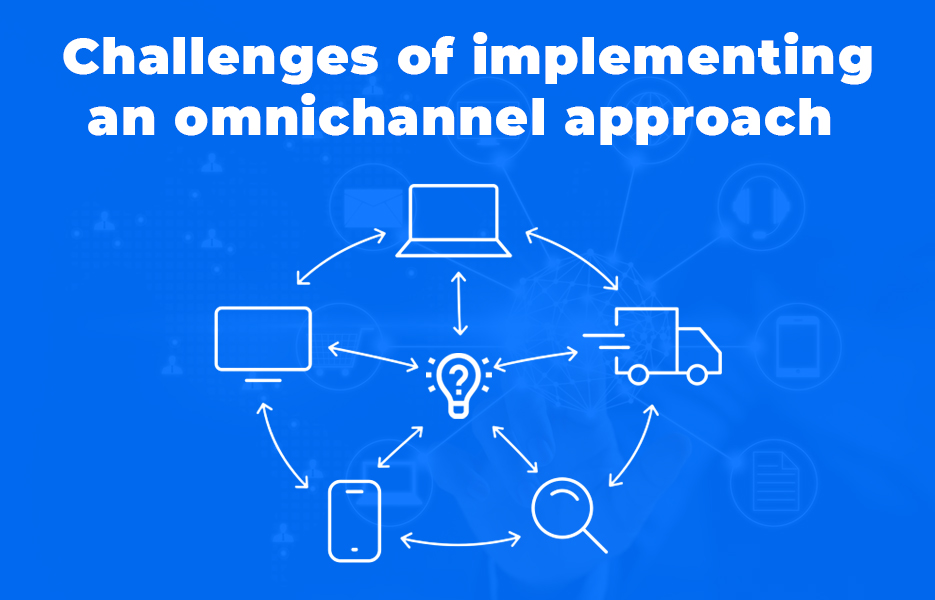
Omnichannel can be a great approach for your business to implement, but it isn’t without difficulties in some places. Initially, some of these challenges may lead businesses to avoid omnichannel, but they don’t have to deter you from moving towards an omnichannel approach – you just need to be aware and have strategies in place to combat the issues. Forewarned is forearmed, after all!
Mobile commerce is still seen as a threat to in-store purchases
Traditional retail stores may be implementing their online operations to maintain relationships with their customers, but there are still a large number of traditional retailers that consider mobile sales a threat to their physical store. What can work for omnichannel retailers as a positive – that is, having the customer in store to browse the items they are considering buying – can also be seen as a threat where customers treat stores as a showroom. Customers may visit a store, then immediately take their phone out and check prices online – and subsequently buy from another retailer while they are in the store. Where the online price is significantly cheaper, or is lower enough that customers are prepared to wait for delivery, this can be a problem for the retailer.
To combat this, retailers can add QR codes to labels throughout the store, so that on scanning, customers are sent to their website to get further product information. This lowers the risk of the customer buying from somewhere else – especially if location services can be utilised to offer them a discount on the item when they are in store, or if they install the company’s app, for example.
Some organisational change may be necessary
Changing from a traditional-only, or an eCommerce-only operation to a fully omnichannel approach takes time, and may require your staff to work in different ways. Omnichannel may mean branding and design teams have to adapt – where they have only worked on web design to date, they may now need to include in-store design and offline materials in their remit.
Where assessments of existing stores are taking place before omnichannel strategy is implemented, change may be required – particularly where store locations are geographically close together. This may involve redundancies, or changes in roles to make this viable. Most businesses are aware of the potential issues that redundancies can cause, including uncertainty and unrest between staff members.
Every channel needs to be mobile responsive
This is less of an issue than it once was, since the growth in smartphone and mobile devices has meant that website building and pretty much all marketplaces are designed with mobile devices firmly in mind. However, there are a lot of ways in which businesses can adapt their in-store operations to be more mobile friendly.
The use of QR codes on products can allow customers to access much more information about products, including pricing, ingredients and production methods – and where customers are more ethical in their purchase choices, this is even more important. If the store is a small one, then using QR codes to add more products to your range (such as colour and size variations) with options for home delivery or store collection can help to keep customers from heading to other retailers online.
Choosing the correct channels
With omnichannel retail, the aim isn’t to keep adding channels in order to increase profits, since they only work with the channels that are optimal for their business. However, choosing the correct channels to operate through may be a tricky decision. Listing inventory on marketplaces like eBay or Amazon may (at first) seem like a good way to make additional sales, but these may not help businesses to provide the service that customers are looking for.
Implementing an omnichannel approach isn’t an overnight thing though, so thorough research is (of course) the first step in the process. Once the initial sales channels are established, periodic reviews are required and careful refinement of the strategy will be necessary to maintain omnichannel success.
Nurturing the offline experience as much as the online
Although high street retail is slowing (and there is much debate as to the role of eCommerce in that!) there is no getting away from the fact that customers still like human interaction with the retailers they buy from. You’ll almost certainly be putting time and effort into your customer service through email, your social media channels and merchandising but what of your offline experience?
Even if you don’t have a permanent bricks and mortar retail outlet, you still need to consider the offline experience that you provide for your customers.
As we said, customers like human interaction with retailers. Helping your customer service team to provide a positive experience is a good first step, especially for phone calls to the team. Not using scripts, or standardised responses to emails and social media enquiries might mean your team take a bit longer to reply, but your customers will feel much more positively about their experience.
When it comes to shipping, providing regular updates for expected delivery and choosing sustainable packing materials is essential. When your customers don’t have any other interaction with you apart from your website, considering what your customers see and feel as they open an order from you is incredibly important – it is why there are so many unboxing videos on YouTube. In addition to your packing materials, you’ll need to think about what information goes on packing slips, your returns policy, and any other ways in which your customers might interact with your business offline to maintain a positive impression of the company.
How to create an omnichannel approach
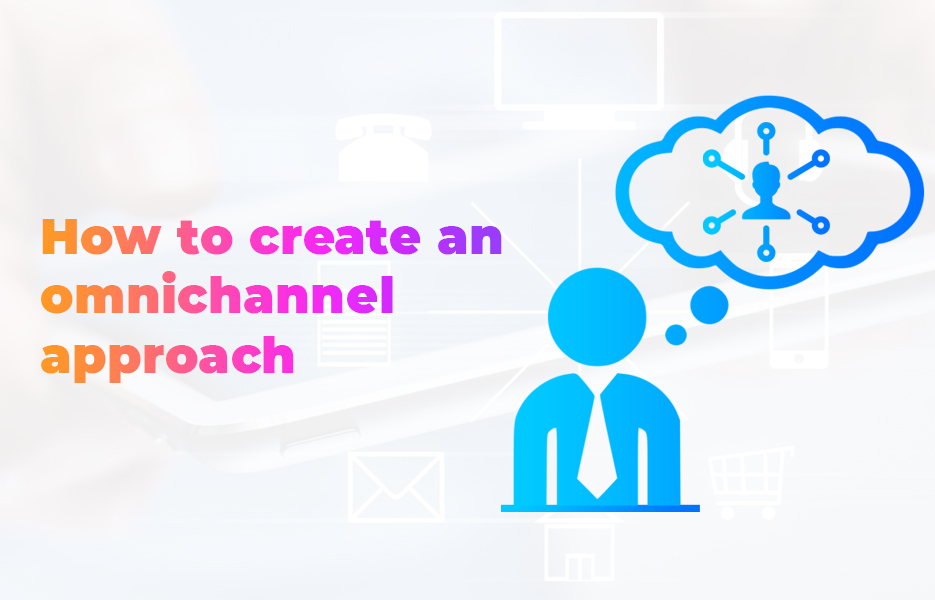
It all sounds pretty impressive, but starting to implement an omnichannel approach isn’t to be taken lightly. It can be really intimidating, and you’re going to need to invest a lot of time, and possibly capital too (depending on your current setup) to get it right. However, it doesn’t need to be complicated, as long as you plan appropriately and set your steps out carefully.
Your aim is going to be integrating three main areas – your sales channels, delivery and fulfilment, and returns. Before you can get started, you will need to assess the current state of your business so you know what needs to be done.
Assessing the current state of your business
You should have already got a strategy that is working for you currently, and ideally you’ll have documented that strategy. If you haven’t and you’ve been winging it, now is the time to put down on paper (or on the screen!) so that you can see what you’re working towards now, and what goals you want to be working towards.
Your current goals
Starting with your current business goals will enable you to narrow down how your omnichannel approach will impact upon them, and help you to achieve those goals, which in turn will also help you to plan your next steps.
Know your customer
It is pretty likely that you’ve done plenty of customer research. Unless your business is Amazon or eBay, your target customer is not ‘everybody’. (and don’t think that Amazon and eBay got to where they are today without a number of different iterations of their target customer!) Going back to your target customer research and refreshing your knowledge of them is an essential move when implementing omnichannel strategy. Knowing them in terms of the sort of income they have, their spending habits and so on will help you to refine your sales channels, and the needs they will have in terms of delivery and possible returns.
Once you have understood your customers, you can map the journeys your customers take to get to your business, which will help you move to the next step – deciding on, and implementing the right sales channels.
Your sales channels strategy
Your omnichannel strategy does not mean that you have to be available to your customers every single marketplace or sales channel on the internet as well as offline. The important thing is that your business has a presence where it is appropriate to reach your target customers, and provides the best service across all your sales channels.
Your online sales channels
If you’ve been selling through your website, Amazon and eBay, and you’ve been making pretty decent sales, you might decide to keep your online sales channels exactly as they are. But chances are, they’re not the only marketplaces your target customers want to buy through. If you’re selling furniture, it is likely that Wayfair should be added to your sales channels, and if you’re selling clothing, then you may want to extend to customers in Europe by selling on Privalia. It is essential though, that your customers on each sales channel receive the same high standard of service and have similar, if not the same options in terms of shipping and payments.
Selling to your customers offline
If your business is online first, you are probably wondering whether you need to create a high street retail outlet, or even a chain of stores to meet the needs of your customers. And while that can be an option for some businesses, for many it simply isn’t financially viable – and as you probably already know if you’ve looked into it, even having one store may incur way too many costs to make it worth your time.
But that doesn’t mean that you shouldn’t look to connect with your customers offline, or that you can’t have touchpoints that customers can find you. You just need to think logically. Your customers don’t just want to interact with you when they’re choosing their products and placing their orders – they also need to be able to interact with you for fulfilment and returns. A few options to consider include:
Working with a retail partner
While opening a retail store for your own inventory may not be right move for your business, working with a partner who can sell your products in their stores can be a great way to get your products physically in front of customers, whether they allocate you space within their store as a department, or they have your products on their shelves alongside their own.
Using third party collection and shipping locations
Many busy customers want to order their items and collect them at their own convenience, especially where their home has an unsecure entrance. By making it easy for them to collect from a third-party location such as Collect Plus, Hermes, Doddle, DPD Pickup or Asda supermarkets for ‘click and collect’ locations, customers are more likely to order from your business rather than one of your competitors.
Similarly, getting to the Post Office to return items isn’t always a viable option for customers, especially if they’re not on a regular 9 to 5 work schedule. Providing a range of shipping locations for customers to send their returns from when it is convenient for them means that they don’t have to rely on anyone else to be able to drop their parcel off, and they can be confident in their order.
Consider temporary locations
While a full time retail outlet might not be a viable option for many eCommerce retailers, a pop up shop, or a presence at a summer fete or Christmas market is a fantastic way to create a personal connection with customers at a lower cost.
Since the location is temporary, the risk is much lower, and there are no ongoing expenses – business rates, utilities and so on are covered by the fee that you pay for the location. Although there will be some initial outlay, if you’ve done your research and your marketing activities right, you’re likely to more than cover that in your takings.
Temporary locations can be a great way to increase your sales and interaction with your customers, but you will need to be prepared to provide the same great service that you do for your online customers. You’ll need to make sure you have a point of sale (POS) system, so you can take payments quickly and easily for the time that you’re there. There are a range of low cost apps that connect to website builders (such as Shopify POS), or if you’re using a tool to manage your inventory and sales, then you can use one of the many apps that connect to those.
If you’re not taking your whole range with you, you’ll need to look at how you can show customers what else you have to offer. This is likely to be as simple as having your website loaded on an iPad, or making sure that you have a QR code that sends customers directly to your website on all your marketing materials, and on banners or other signage at your stand.
Delivery and shipping options
Your omnichannel retail approach doesn’t stop with your sales channels. You will also need to provide a range of delivery and fulfilment options to allow customers to receive their orders in the best way for them. Your options will need to include:
- Standard shipping
- Express shipping
- Customers may want to save multiple addresses in their account, so that it is easy for them to ship to their home address, work or office, or to a family member
- Being able to collect from locker locations or collection counters
- Having a click and collect in-store service (especially if you can have same day collections)
If you can’t offer free standard shipping, and enough of your customers buy from you multiple times a year, providing a premier shipping and returns option as ASOS and Boohoo do will help to keep your customers engaged. Even if your prices are slightly higher, they are more likely to purchase from you since they have already paid for the shipping and they want to get their money’s worth. This isn’t a necessary step, but one to consider and research when thinking about increasing repeat custom.
Payment options
While we’re talking about having options for each stage of the customer journey, we can’t avoid talking about giving your customers options when it comes to payments. You’ll already have secure payment options on your website – and in the UK, credit or debit card or PayPal is most frequently utilised.
When fashion retailer ASOS added the ‘try before you buy’ payment option Klarna to their website as a payment option, they saw an instant increase in sales – around 23%! Getting nearly a quarter more additional sales simply from adding another payment options is a pretty impressive return on the time invested, and enables your customers to make their purchase sooner, since Klarna delays taking payments from people for 30 days. You’ll need to be prepared to support a lot more returns if you implement this approach though, since if the items are returned in that 30 day window, customers won’t be charged at all.
Big-name retailers like Very allow customers to spread the cost of their purchases by using their account option to pay, then repaying in instalments. Retailers don’t need to create their own credit account though, since there are a lot of options that are available allowing customers to delayed payments. This type of payment provider allows customers to make major purchases while splitting the cost – Klarna is an option, but there are plenty of alternatives including Afterpay, PayPal Credit and Sezzle.
Returns
Although in an ideal world, you wouldn’t have any returns to deal with, the reality is that retailers will always need to deal with returns from customers. Although most eCommerce retailers allow returns (and there aren’t very many customers who would place an order if returns were not allowed) omnichannel strategy means you’re going to offer more than one way of returning items. Just allowing customers to return their items at their local Post Office isn’t going to be enough, since they will expect to be able to use the method of return that suits them best.
You will want to keep the Post Office option available, since it may suit many customers, but you’ll also need to have other ways in which your customers will want to complete their returns. These might include such as:
- Courier collections from home
- Drop-off locations such as supermarkets, convenience stores and parcel shops
- In-store returns directly to you
The way returns become omnichannel is when they can use any of the return options they want – and they don’t have to use the same one. They simply use the one that is the most convenient to them, whenever and wherever they are.
Optimisation and development
Once you have planned your approach, implemented the steps in your strategy and you’re seeing greater returns because of your investment, that isn’t your job done. In retail, nothing stays still for long and you’ll need to continue to assess the effectiveness of each part of your strategy.
You’ll establish how often to reassess your strategy, whether you take time monthly, quarterly or bi-annually to evaluate your metrics. As you make your assessments, you’ll be able to establish whether there are any issues that have caused a drop-off for each touchpoint, and if a certain channel isn’t serving your business any longer, you can eliminate it from your business.
As more services become available you will need to establish if they will suit your customers, and if they do, whether you can offer the right level of service through those options.
How long will it take until your business is omnichannel?
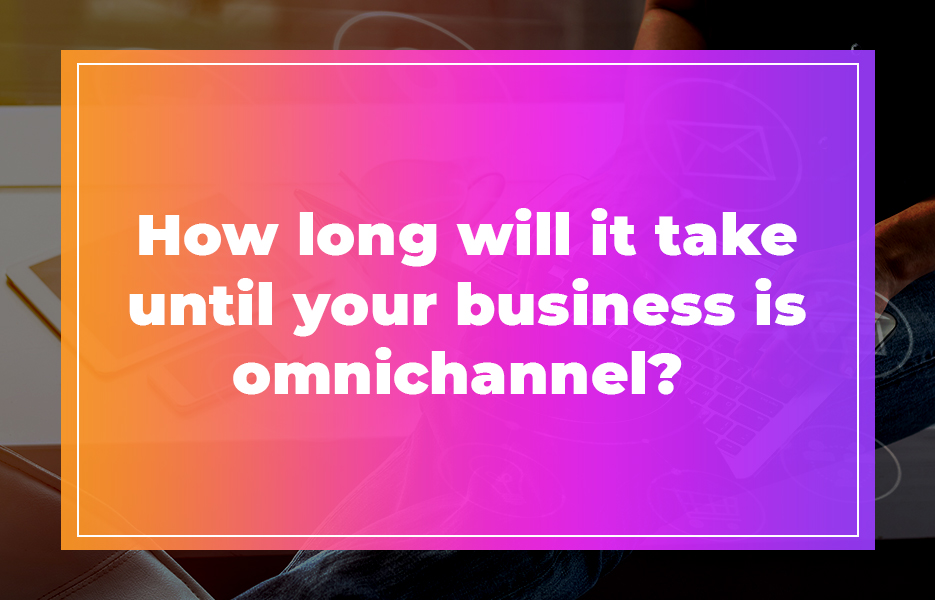
We’ll give it to you straight: it isn’t going to be a quick, overnight process to get your business to be completely omnichannel, and there is going to be a lot of work and ongoing processes to get to that point. Big brands that have implemented omnichannel strategies, such as ASOS, Next and Topshop have taken a long time, research and interaction with their customers to get to the point that they are now.
What systems do you need for an omnichannel strategy?
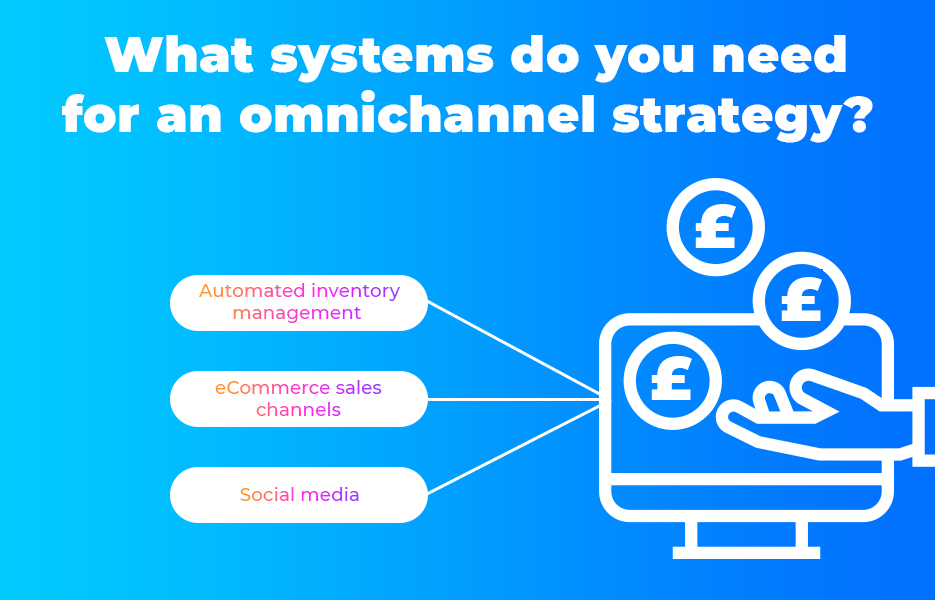
When you’re planning your omnichannel strategy, you need to think about the systems you’re going to need to keep everything synced and running smoothly. You don’t want to have to cancel orders because you’ve accidentally oversold on one channel, or missing a message from a customer. Getting your systems in place before you get started is absolutely essential for your omnichannel strategy to be a success.
Every business is different, and many will already have some of these systems in place. As a bare minimum, retailers will need:
Automated inventory management
When you’re managing a business with a warehouse for your stock and inventory, a retail outlet that also holds stock and multiple online sales channels, it is essential to make sure your stock levels are updated instantly and are accurate absolutely everywhere. We’ve already mentioned overselling, but you also need to think about returned items, however they are returned. The moment an item comes back into your store, you need to have your system update your stock levels that are available to your online customers too – otherwise you’re missing potential sales. That means you’ll be looking for a system that can connect to your marketplaces like Amazon and eBay, as well as your website – however you’ve created that.
There are a wide range of automated inventory management systems, such as Linnworks, Veeqo and Volo. Many have similar functionality, but work in different ways and at very different price points, so it is important to find the one that is right for your business. Bear in mind the different locations that you will hold inventory that will need to be updated on all your sales channels and that your point of sale systems will need to integrate too, so it may be better to have one system that can handle everything.
Many inventory management tools have app stores that have add-ons that provide additional functionality, so if a solution you’re considering doesn’t appear to have a specific function that you need, it is worth checking to see if such an app has been developed by a third party developer. Unless your type of business is particularly rare, is unlikely you’re the first business to need that functionality, and generally developers have spotted the opportunity to create what you’re looking for. If what you need isn’t available, you may need to work with a developer to create a bespoke solution.
eCommerce sales channels
You will already have some of the eCommerce sales channels that work for you. But while you’re working towards implementing an omnichannel strategy, now is a great time to assess the sales channels that are going to work for you.
By the time you’re working towards omnichannel, you’re likely to have your website set up – whether that is through Shopify, Magento, WooCommerce or another website building solution. If you are just starting your omnichannel approach, then that’s going to be your first task – getting your website built and optimised. While you’re working on your website, you’ll need to carefully assess the payment options that will suit your customers the best, giving them a choice rather than defaulting to credit or debit cards or PayPal.
You’ll also need to decide which marketplaces to sell through, based on your research and not just to be ‘everywhere’. For example, businesses that sell luxury items are likely to avoid selling through eBay and Wish, for example, as customers who are looking for this type of product won’t be using this type of marketplace to find them – they will be searching elsewhere. Furthermore, there is often scepticism about luxury goods on these types of channels are fake, and by selling on discounted marketplaces there is the danger of cheapening the brand.
Social media
You’re probably offering customer support as well as advertising your products on your social media channels – which is fantastic – but are you selling to them on social media as well? Facebook are making it easier than ever to make products available for customers to make purchases without them needing to leave their feeds, Instagram has shoppable posts, while Pinterest has product pins, and Snapchat has recently launched dynamic ads. Remember, when you implement sales options on your social media channels, you’ll need to be prepared to provide the same amount of support as your other sales channels.
What is optichannel?
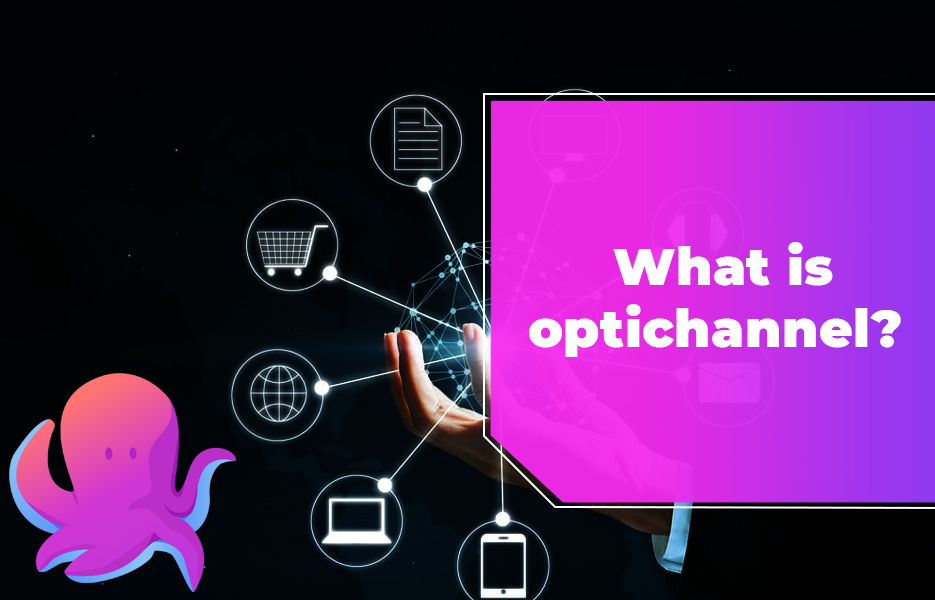
You’re probably wondering what the heck… We’re just getting omnichannel sorted and now you’re throwing another term at us? Although some businesses are working towards omnichannel, some are going beyond that to optichannel to increase customer satisfaction, and it makes sense for them to do so.
Optichannel engagement is about mapping the customer journey, and understanding the big data in order to provide your service through the right channels rather than all of them.
So, to put it into perspective:
Multichannel strategy uses multiple sales channels to reach target customers. Businesses work with educated guesses to decide which sales channels their customers use, and then make products available on as many as possible.
Omnichannel strategy allows customers to choose the sales channels they want to interact with a business at any stage of the purchase cycle. This also considers shipping and returns, and allows customers to have the majority of the control over their interaction with the brand.
Optichannel strategy helps brands to enhance the customer experience at a more detailed level. Personalisation of the experience on different interactions is key – so for example, considering when a text message might be better in terms of open rate, rather than an email, or changing the goal of the interaction on a certain sales channel.
Your omnichannel strategy is going to make your customers be able to access your business everywhere – from browsing, to buying, delivering and returning. While your customers are at the heart of your omnichannel strategy, the end goal is to help you to increase your profits – which is the aim of every business. If you’re looking to diversify your business by adding extra products to your inventory without needing upfront investment in stock, or to prove the concept of a new direction before investing your cash, talk to our team – we’ll help you to increase your sales as part of you implementing your omnichannel strategy.
This post contains affiliate links. If you use these links to buy something, we may earn a commission. We only use referral links for businesses that we would use ourselves. Thanks for your support!

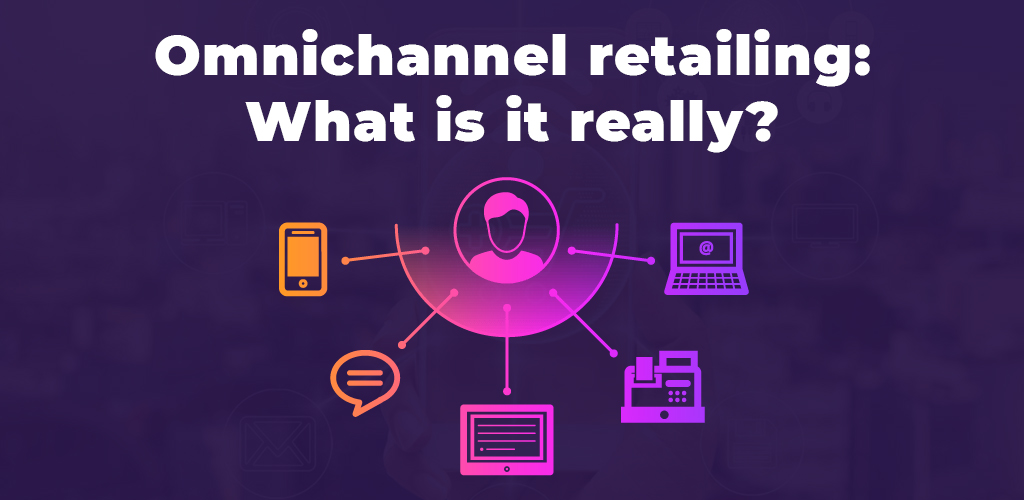


DropShip products from verified suppliers to diversify your inventory and scale your eCommerce business